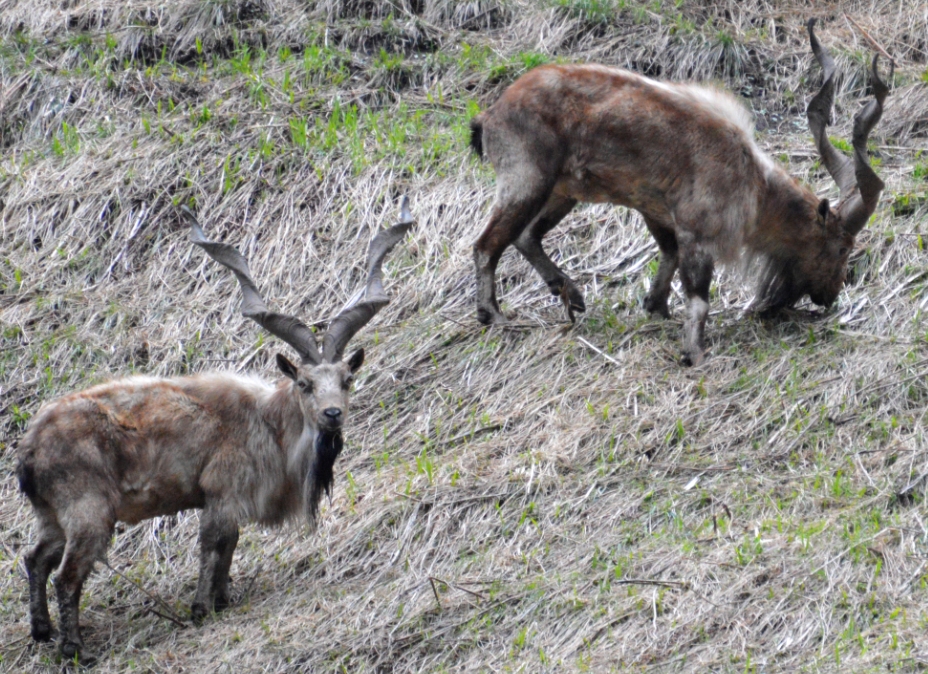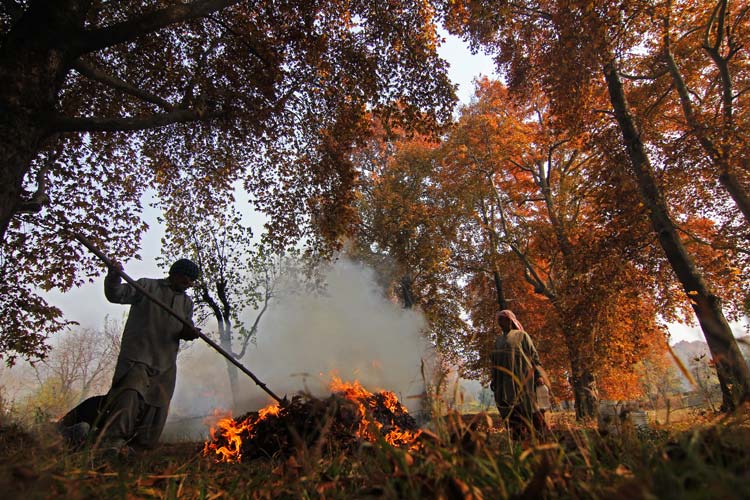A vast area straddling the Line of Control is home to various wildlife species. Tahir Bhat / Sheikh Mustafa report about Lachipora Sanctuary that lacks a record of any conflict between humans and wildlife

It is a wildlife reserve literally on the Line of Control (LoC). The Lachipora Wildlife Sanctuary, 60 km from Baramulla falls in Boniyar and is known for its dense forests, green and high mountains. It is home to Markhoor – one of the threatened species living a precarious life in Kashmir forests, black deer, leopard, musk deer, black and brown bears, red foxes and countless species of migratory birds and medicinal plants. For a quarter of the year, even a sheep breeding farm operates from this sanctuary to assist the nomad herders.
The breathtaking 90 square km sanctuary starts from the Lachipora village itself. Then it moves up and eventually opens up in a vast high altitude plateau. From its base, one needs to trek almost 15 km to reach its farther end.
This reserve is the testimony to the larger reality that the residents, the soldiers and the wildlife apparently live in harmony with each other. This is despite the frequent pounding of the rival armies on each other. Though the shells do not land in the reserve, the noise is audible to the wildlife as it is to humans.
Soldiers with machine guns can be found in the bunkers within the reserve as potters carrying supplies to the remotely located inaccessible posts are seen shuttling in groups from the main road to the high-altitude positions. Occasionally, women in groups are also seen in the reserve busy collecting various herbs for their medicinal and food value. These plants are sun-dried and used during winters for making delicious preparations or to treat certain common diseases like fever, cough, itching and influenza.
The biotic interventions may have had an impact on wildlife. Even people admit it. “Locals take their small herds for grazing to the sanctuary and it obviously must be disturbing the wildlife,” Mohammad Maqbool Sheikh, a young student and a Lachipora resident said.
Biotic interventions cannot be avoided for a set of visible reasons. The reserve is home to the shrine of Baba Gafoor Sahib and people routinely visit the shrine. In fact, a cluster of villages are either located within the sanctuary or are located on the fringes – Reshawardi, Neelusa, Bijhama, Mayan, Gawas. In all these villages the wildlife animals and humans live literally side by side.
“This is one of the wildlife areas in north Kashmir that has almost no conflict with the wildlife,” Mohammad Maqbool Baba, the in-charge of the Sanctuary said. “We have a huge conflict between the wildlife and the human settlements in Kupwara, Bandipore, Langate and Handwara but in Baramulla and especially in the Lachipora we do not have any such issue.”
The sightings of the animals are very common and some of the top executives of the Wildlife Trust of India quite frequently visit the reserve. “The reason for the low conflict is that the encroachment is less and the food is adequate for the animals,” Baba said. “The wildlife move out of forests mostly for want of food.”
Residents think it would have been better if the scenic spots within the sanctuary were exploited for tourism. There are various such spots. Between Gawas and Branawar, there are various such spots. If the authorities think of showcasing the Nil Nagh, a small lake that remains frozen for most of the year, it will be a smash hit.
The sanctuary’s location is fascinating. Located on the north bank of the Jhelum River, it is bounded to the north by dense forests of Langate Forest Division as Maidan Forest connects it from the southern side. The LoC is the sanctuary’s Western border. Being a defence area may be one factor for the protection of the reserve. Almost everybody has to first seek permission from the army to enter the main gate. “It is too long a distance to the LoC but one thing is clear that the wildlife is safe at the base and at the top,” Baba asserted.
“We are doing everything to protect some endangered species located in the sanctuary,” M M Baba, the in-charge DFO said. “We have some local staff that works on a meagre salary but play a vital role in protecting the place.”

However, the interesting trend on the wildlife front in north Kashmir is the spurt in the population of the wild boar. The Baramulla Wildlife Range officer, Altaf Koul was quoted saying that the wild boar pupation has gone up in wildlife areas straddling the Line of Control. “They (wild boars) mostly reside near the Line of Control. They have tusk teeth and can attack people,” he was quoted saying.
A wild pig, the boar is not endemic to Kashmir. But the area is connected with the Poonch belt as well.
“There is no census on the wild boar population but the fact is that the numbers have gone up,” Baba said. “They move in herds and have been seen in various areas in north Kashmir.”
Residents, as well as the wildlife staff of the Lachpora sanctuary, said they have not sighted the wild boar in last many years. But, at the same time, it does not necessarily mean that the animal does not move around in the greater Qazinag belt that is home to four wildlife reserves. Raashid Naqash, Wildlife Warden said the existence of wild boar in the belt is a historic reality and it is documented that the animal has been there for decades.
Baba said the same herd can be seen in one forest on one day and in another linked forest the other day. The wild boar, he said, has great adaptability and it survives harsh weather and likes the cold weather. He said the boar was introduced in Dachigam in the 1980s and the same population might have increased because of the abundance of food and other things. Wild boar is protected under Schedule-III of the wildlife act.
“Some people have seen a unique animal in Handwara and Uri but the important thing is that it is yet to be studied,” Baba said. ”It is yet to be seen in Lachipora.” In neighbouring Limber sanctuary, a dead wild boar was located during winter. Even last month a dead boar was seen near the Boniyar graveyard.















